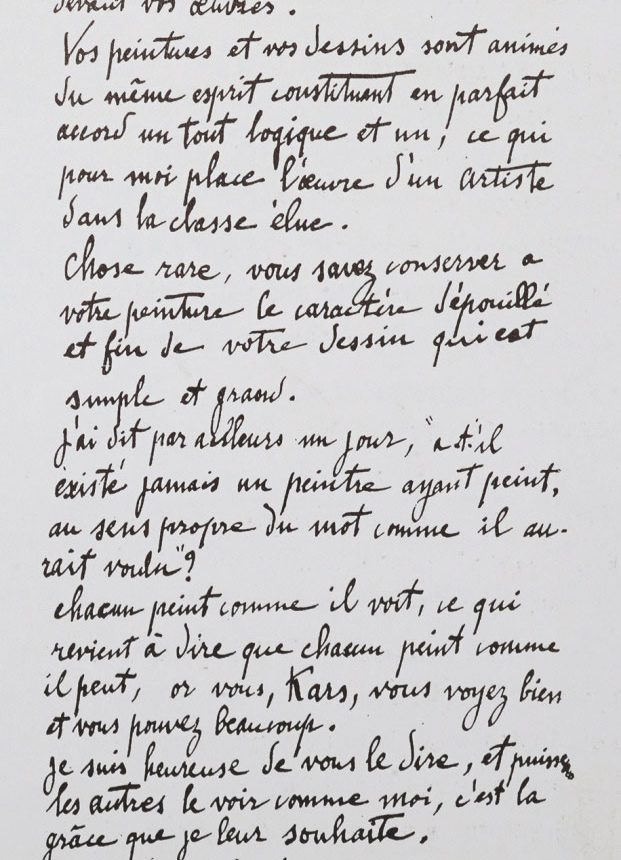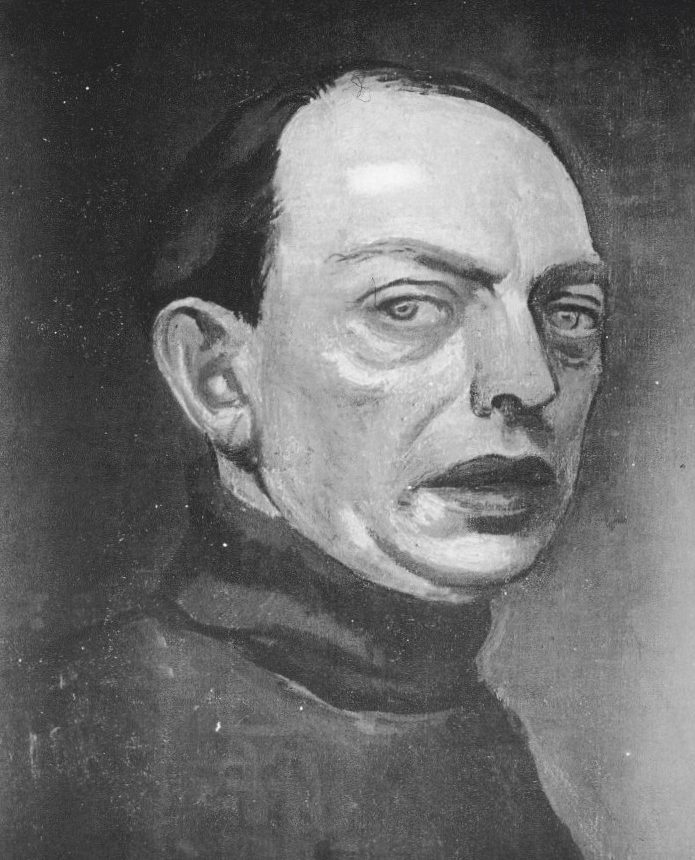Raymond KANELBA
January 2, 2019Michel KIKOÏNE
January 2, 2019Georges KARS (born Georges Karpeles)
KRALUPY (CZECHOSLOVAKIA) 1882 – GENEVA (SWITZERLAND) 1945
Georges Kars was born in the Prague region, where his parents who were grain merchants originally from Germany, had settled. When he was a child, he drew on his school notebooks. After school, he spent time at a gallery run by Lheman. He never missed an exhibition in Prague. He took classes taught by a young painter before leaving for Munich in 1899. There, he studied with Franz von Stuck and became friends with Pascin and Paul Klee. Between 1905 and 1907, he went to Prague and later settled in Madrid, where he met Juan Gris and immersed himself in the paintings of Velazquez and Goya. In 1908, after a stay in Prague, Kars arrived in Paris and settled in Montmartre. He met his friend Pascin, and got to know Suzanne Valadon and Maurice Utrillo. He also became friends with Chagall, Apollinaire, Max Jacob, the art critic Maurice Raynal, and the Greek painter Demetrios Galanis.
During World War I, he was in Belgium with Pascin. In 1923, he spent the summer in Ségalas, in the Basse-Pyrénées region, with Suzanne Valadon’s family. Under the influence of Paris and Cubism, his shapes became simpler; however, he remained deeply attached to realism. According to him, “art does not lie in an elaborate technique but within the soul.” He produced figurative paintings and used several techniques and materials including Indian ink, watercolor, and pastels. In 1933 Kars bought a house in Tossa de Mar in Catalonia, where he spent three years. Back in Paris, he settled in rue Caulaincourt. In 1939, he took refuge in Lyon. In 1942, he went into exile and stayed at his sister’s in Switzerland.
In 1945, as he could not stand the horrifying tragedy that hit his people, he committed suicide by jumping out of the fifth floor of his hotel. His studio was sold at auction on June 17, 1966 at the Palais Galliera. In 1983, a retrospective of 120 paintings was held at the modern art museum in Troyes.
Stories of Jewish Artists of the School of Paris 1905-1939
FRENCH-ENGLISH
Capitale des arts, le Paris des années 1905-1939 attire les artistes du monde entier. De cette période de foisonnement, un terme est resté, celui d'Ecole de Paris, qui recouvre une grande diversité d'expression artistique. Dans ce brassage dont Montparnasse est le creuset, un groupe se distingue : celui des artistes juifs venus de Russie, de Pologne et d'Europe centrale. Si leurs styles sont variés, un destin commun les rassemble : ils fuient l'antisémitisme de leur pays d'origine. Certains ont connu la célébrité dès les années 1920, tels Soutine, Lipchitz ou Chagall. D'autres n'ont pas eu le temps ou la chance d'y accéder. Près de la moitié a péri dans les camps de concentration nazis.
From 1905 to 1939, Paris attracted artists from all over the globe as the capital of the art world. This period of artistic proliferation became known as the School of Paris, and includes a great diversity of artistic expression. Within the teeming art world centred on Montparnasse, one group set itself apart: Jewish artists from Russia, Poland, and Central Europe. Although their styles were diverse, they shared the common fate of fleeing anti-Semitic persecutions in their home countries. Some became famous in the 1920s, such as Soutine, Lipchitz, and Chagall, while others did not have the time or the luck to gain renown. Nearly half of these artists died in Nazi concentration camps.






